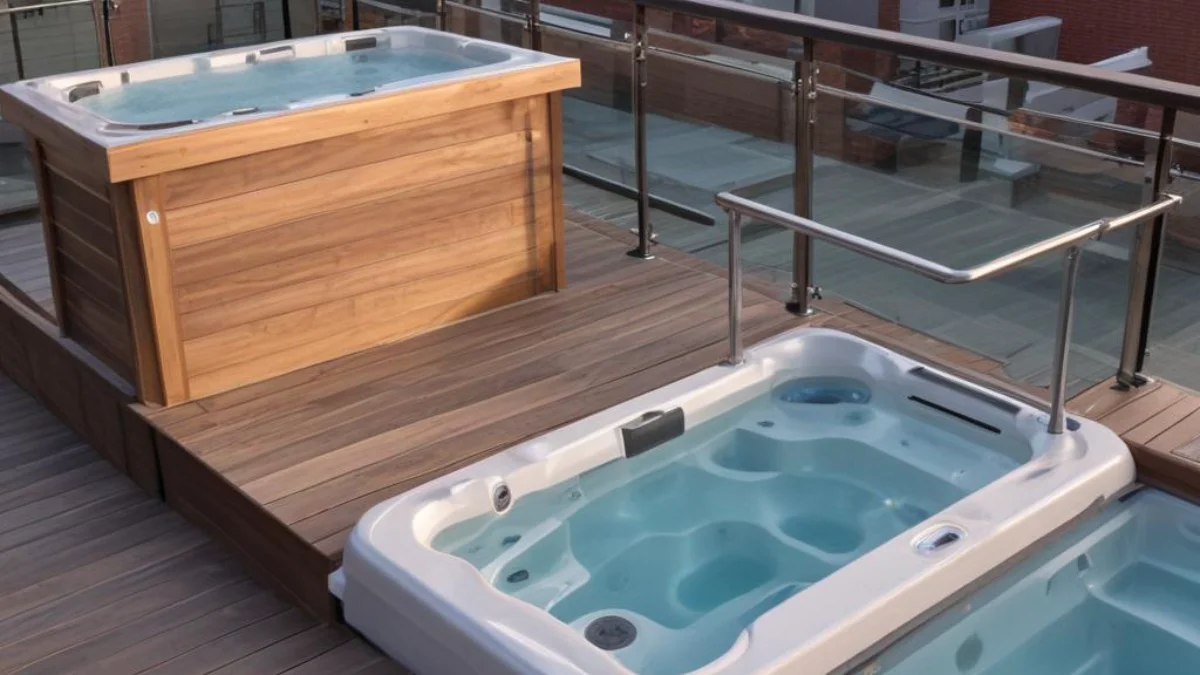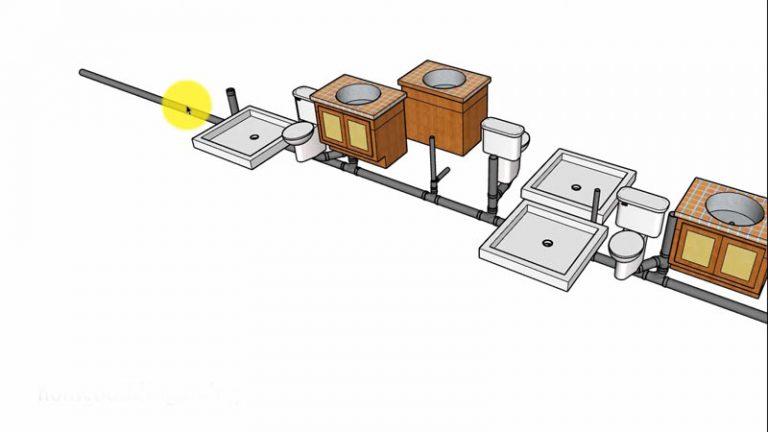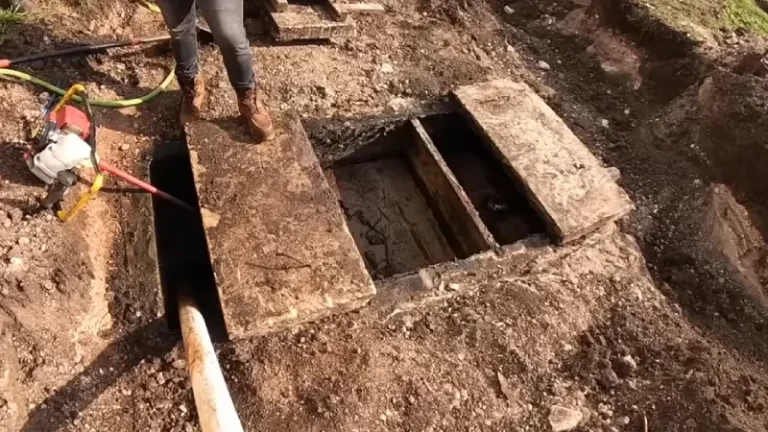Hot Tub on Rooftop Deck: Don’t Make These Catastrophic Mistakes!
The dream of a hot tub on a rooftop deck is the ultimate symbol of urban luxury and relaxation. Imagine soaking under the stars, high above the city buzz, with a panoramic view as your backdrop. It’s a compelling vision, but one that can quickly turn into a costly and dangerous nightmare if not approached with meticulous planning and an unwavering commitment to safety.
Many homeowners, captivated by this idyllic image, dive headfirst into the project without understanding the immense complexities involved. The problem isn’t the dream itself; it’s the lack of knowledge about the significant structural, electrical, and logistical challenges that stand in the way. This article will guide you through the critical safety and installation tips to ensure your rooftop oasis is a secure and lasting investment.
You'll Learn About
The Weighty Problem: Why Your Roof Might Not Be Ready
The single most critical factor in a rooftop hot tub installation is weight. It’s a detail that is dangerously underestimated. A typical hot tub, even a smaller model, can become astonishingly heavy when filled with water and people, posing a serious threat to your building’s structural integrity.
A standard four-to-six-person hot tub can hold around 400 gallons of water. Since water weighs about 8.34 pounds per gallon, the water alone accounts for over 3,300 pounds. Add the weight of the tub itself (500-1000 pounds) and the occupants, and you are easily looking at a total weight of 5,000 to 6,000 pounds, concentrated in a relatively small area. That’s equivalent to parking a large SUV on your roof.
Understanding Structural Loads
Most residential roofs are not designed to support such a massive, concentrated “live load.” They are built to handle environmental pressures like snow, rain, and wind, which are typically distributed more evenly. Placing a hot tub on an unprepared roof can lead to sagging, leaks, cracked joists, and in the worst-case scenario, a catastrophic collapse.
Before you even start shopping for a spa, your first and most crucial step is to hire a qualified structural engineer. An engineer will assess your building’s current load-bearing capacity, analyze the architectural plans, and determine if and how the structure can be reinforced to safely support the immense weight. This is not a step you can skip or approximate.
The Essential Pre-Installation Checklist: Your Blueprint for Success
Once you have a structural engineer’s report confirming the feasibility, the real planning begins. A successful and safe rooftop hot tub installation requires navigating a maze of logistical, electrical, and regulatory hurdles. Overlooking any of these can result in costly fixes, safety hazards, or orders to remove the installation entirely.
Step 1: Structural Reinforcement and Support
If your engineer determines that reinforcement is necessary, this will be the most intensive part of the project. The solution often involves adding more joists, installing stronger beams, or adding new support posts that transfer the load down through the building’s frame to the foundation. This work is complex and must be performed by a licensed contractor according to the engineer’s exact specifications.
The base for the hot tub must be perfectly level to ensure the water distributes evenly and the tub’s shell isn’t stressed. Even roofs that appear flat often have a slight pitch for drainage. A level platform or specialized support pads may be required to create a stable, even surface.
Step 2: Navigating Permits and Approvals
Never assume you can install a hot tub on your roof without permission. You will almost certainly need a building permit from your local municipality. The permit process ensures that your plans comply with local building codes, zoning laws, and safety standards. Your structural engineer’s report will be a key component of your permit application.
If you live in a condominium or a building governed by a Homeowners Association (HOA), you will need their explicit approval. HOAs have their own rules regarding additions and alterations to common or exclusive-use areas. Presenting them with a comprehensive plan, including the engineer’s report and proof of insurance, is essential.

Step 3: Electrical Installation – The Critical Safety Link
Mixing water and electricity requires the utmost care and professional expertise. A rooftop hot tub installation has specific electrical requirements that must be handled by a licensed electrician. Most hot tubs require a dedicated 220V-240V, 50-amp or 60-amp circuit.
The National Electrical Code (NEC) has strict rules for hot tub wiring. This includes the installation of a Ground Fault Circuit Interrupter (GFCI) for protection against electrical shock. An emergency shut-off switch must also be installed in a visible location, at least five feet away from the tub. All wiring and outlets exposed to the elements must be weatherproof. If you’ve ever dealt with a radon fan loud when cold, you know how important proper installation of outdoor electrical components is.
Step 4: Water Supply and Drainage Solutions
Getting water to and from your rooftop hot tub is another significant logistical challenge. For filling, you’ll need a hose long enough to reach from an outdoor spigot or an indoor faucet. But draining several hundred gallons of water is more complicated.
You cannot simply drain the water onto the roof surface. This can cause water damage, leaks, and stress on the roofing membrane. The best solution is to use a submersible pump and a long hose to direct the water to a suitable drainage point, such as a large utility sink or a storm drain at ground level. Always check local regulations regarding the disposal of spa water, which contains chemicals.
Choosing the Right Hot Tub for Your Rooftop Deck
Not all hot tubs are created equal, and some are better suited for rooftop installations than others. When selecting your model, consider factors beyond just the number of jets. Look for spas with a lower empty weight and a smaller footprint to minimize the structural load.
Some manufacturers offer “plug-and-play” models that run on a standard 110V outlet, but these are generally less powerful and may not be suitable for colder climates. For a true rooftop experience, a hard-wired 220V model is typically the better choice. Consider the materials as well; acrylic shells are standard, but some lighter-weight rotational-molded spas might be an option if weight is a major concern.
Key Features for Rooftop Spas
- Locking Safety Cover: This is a non-negotiable safety feature. It prevents accidental access, especially by children, and also helps to insulate the water, reducing energy costs.
- Durable, UV-Resistant Cabinetry: The spa’s exterior will be fully exposed to the elements. Choose materials that can withstand sun, wind, and rain without fading or cracking.
- Efficient Insulation: A well-insulated hot tub will hold its temperature better, which is crucial in an exposed rooftop environment where heat can dissipate quickly. This will save you money on electricity bills.
Waterproofing and Protecting Your Investment
Your rooftop deck itself needs protection. The area under and around the hot tub must be impeccably waterproofed to prevent leaks into the living space below. This often involves more than just the standard roofing material.
A high-quality waterproof membrane should be installed under the hot tub’s support structure. Consider creating a “pan” or a secondary drainage system that can catch and redirect any potential overflows or leaks. Regular inspection of the roofing material and seals around the spa is critical for long-term maintenance. This is as important as clearing a birds nest in gas fireplace vent to prevent other issues.
| Installation Aspect | Key Safety Concern | Required Professional | Estimated Cost (Varies Greatly) |
|---|---|---|---|
| Structural Assessment | Risk of roof collapse due to weight. | Structural Engineer | $500 – $2,000 |
| Structural Reinforcement | Improper support leading to structural failure. | Licensed Contractor | $3,000 – $15,000+ |
| Electrical Wiring | Risk of electrocution and fire. | Licensed Electrician | $800 – $2,500 |
| Plumbing & Drainage | Water damage, leaks, and mold. | Plumber (recommended) | $400 – $1,200 |
| Delivery & Placement | Damage to property or the hot tub itself. | Crane Operator / Specialized Movers | $500 – $1,500 |
Long-Term Maintenance and Safety Considerations
Your responsibility doesn’t end once the installation is complete. A rooftop hot tub requires diligent maintenance to remain safe and enjoyable. Regular water chemistry checks are essential for hygiene. You must also routinely inspect the spa’s components, including the cover, jets, and electrical connections, for any signs of wear and tear.
Create a safety plan for your rooftop deck. Ensure you have proper lighting for nighttime use and that the area is free of tripping hazards. Just as you’d plan how to transport a ladder without a roof rack safely, think about access and safety around the tub. Consider installing a safety railing around the deck perimeter if one is not already present, and always supervise children and guests when the hot tub is in use.
Final Thoughts: A Luxury Worth the Effort
A hot tub on a rooftop deck can be a spectacular addition to your home, offering a unique and luxurious way to relax and entertain. However, the path from dream to reality is paved with critical safety checks, professional consultations, and careful planning. The potential for disaster is real, but it is entirely preventable.
By prioritizing a professional structural assessment, hiring licensed tradespeople for the installation, and adhering to all local codes and regulations, you can create a stunning rooftop oasis that is not only beautiful but, most importantly, safe and secure for years to come.


